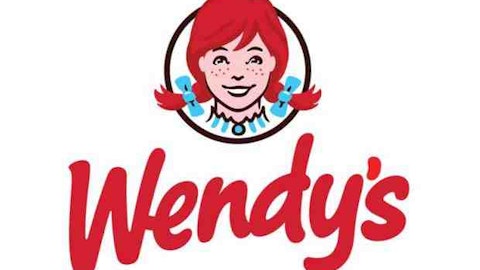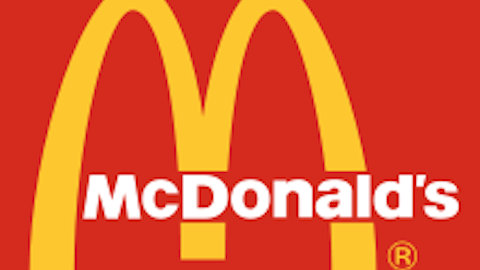Lastly, the company is refranchising (selling company stores to franchisees) aggressively around the world, but in mainland China, it is building its own restaurants. When a company operates its own stores, and those stores outnumber franchises, healthy profits can follow. But the extent to which Yum! has concentrated its business model in China on company locations is surprising. Between 2010 and 2012, Yum! added a net of 1,319 company-owned stores in China. But total worldwide company-owned stores increased by only 307 during the same period, as China additions were offset by refranchising and company-owned-store closures in the rest of the world. As of the end of 2012, 79% of the company’s locations in China were company-owned. So not only is Yum! incurring greater revenue risk in China, ultimately it is reshaping the nature of its operating profits, and dialing up both the potential reward and the risk on its bottom line.
McDonald’s game plan is more measured
McDonald’s Corporation (NYSE:MCD) has taken a much more balanced approach to China, as Thompson pointed out. With just 3% of operating income generated in the country, McDonald’s Corporation (NYSE:MCD) has a different set of objectives than Yum!. Not that McDonald’s Corporation (NYSE:MCD) is neglecting China: The company considers the country to be one of eight “major markets” that comprise over 70% of the company’s revenues. But almost every facet of McDonald’s Corporation (NYSE:MCD) approach differs from Yum!’s. McDonald’s will grow in a mix that supports its current balance of franchised versus owned stores. It won’t ignore dynamic markets such as South Korea and Malaysia, which, like China, should also see phenomenal growth but will provide portfolio diversification — something Yum! is apparently not concerned with. McDonald’s practices portfolio allocation reminiscent of a cautious mutual fund manager when it expands in developing markets, while Yum! is doubling down in China, a concentration strategy that brings to mind the tactics of large hedge funds. McDonald’s possesses a proven restaurant revenue model that squeezes optimum revenue out of drive-through traffic. Yum! has expanded KFCs primarily in malls.
Which strategy wins in the long run?
At this point, it’s early to tell which strategy will bear out over time. If you’re a fan of McDonald’s, you need simply to look at the company’s steady growth and clockwork earnings since the 1970s, and it becomes apparent that Thompson’s hunt for revenue in developing markets should naturally be diversified and methodical, just as he says. If you’re positive on Yum!, the following chart may indicate that near-term setbacks are a risk worth taking. Take a peek at the percentage increase in income from continuing operations over the last five years between the two companies:
MCD Income from Cont. Ops Quarterly data by YCharts.
One can’t deny the upside of Yum! throwing so much of its resources into China. But for all that momentum, McDonald’s investors can hardly complain: Due to a significant dividend, and the company’s steady earnings per share, McDonald’s total-return mark over the last five years is not very far behind Yum!’s, with much less risk:
MCD Total Return Price data by YCharts.
How to choose
So what to make of these differences? Both companies present intriguing investment opportunities. Whether you weight one more heavily in your portfolio depends on how you align philosophically with each of these visions. Personally, I believe McDonald’s presents a safer investment from a risk/reward perspective. With reinvested dividends, McDonald’s stock has been a total-return monster over the last 20 years, returning almost 1,000 percent. But for those who possess a fair amount of risk appetite and can hold the stock for several years, Yum! may be worthy of attention. A final investing note: If you buy Yum!, you may want to check the “Restaurant Unit Activity” tables that the company publishes in each quarterly and annual report. Today, over 62% of company-owned stores are found in China. Every percentage point above this in the future will represent potential reward, but also potential gray hairs for buyers of Yum! stock.
The article McDonald’s and Yum!: Competing Visions in China originally appeared on Fool.com.
Fool contributor Asit Sharma has no position in any stocks mentioned. The Motley Fool recommends McDonald’s. The Motley Fool owns shares of McDonald’s.
Copyright © 1995 – 2013 The Motley Fool, LLC. All rights reserved. The Motley Fool has a disclosure policy.







